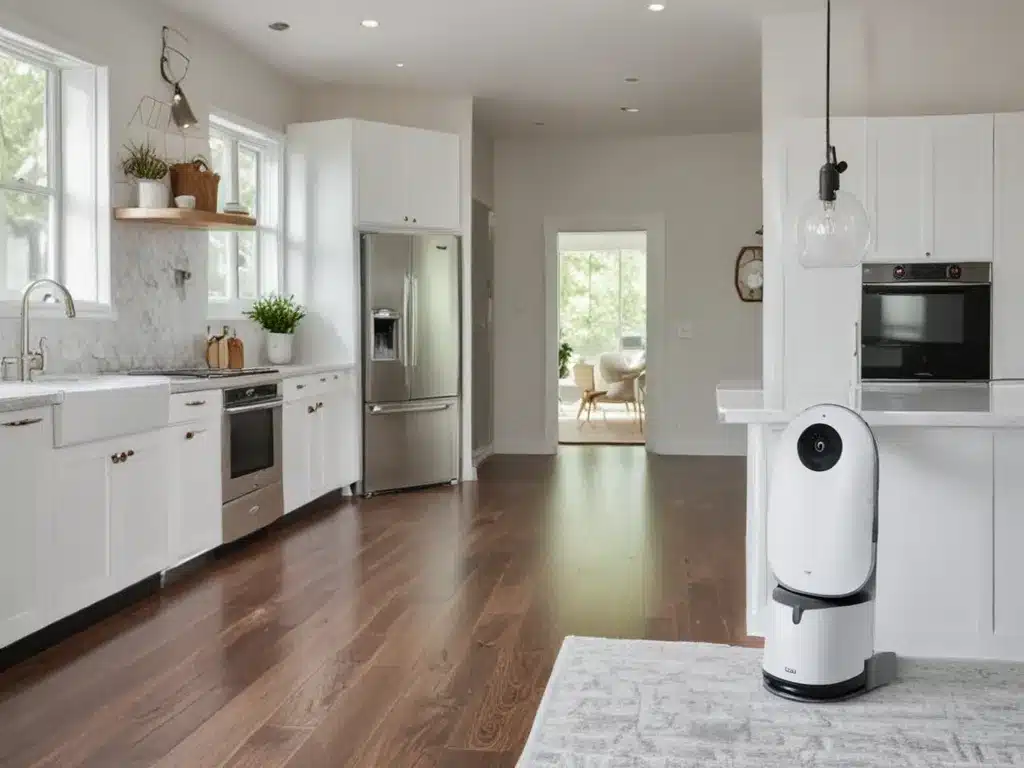Introduction
The smart home industry has exploded in recent years. New Internet of Things (IoT) devices like smart speakers, security cameras, and other smart home gadgets have become hugely popular. One area being transformed by this new smart home tech is cleaning and housekeeping. As someone who loves testing out the latest gadgets, I’ve been excited to try the new wave of smart cleaning devices hitting the market. In this article, I’ll discuss how these smart home devices are changing and improving home cleaning.
Smart Robot Vacuums
One of the most popular smart home devices is the robot vacuum cleaner. Brands like iRobot Roomba and Ecovacs Deebot have made robot vacuums a must-have cleaning tool. I tested out a Roomba s9+ and found it did an excellent job navigating my home and cleaning my floors. Here’s an overview of how smart robot vacuums are impacting home cleaning:
- Automatic operation – They clean independently without human input needed. I just press start and it cleans the whole floor.
- Scheduling & mapping – I can schedule cleaning and the vacuum maps my home for efficient navigation.
- Advanced sensors – Robot vacuums have sensors to detect and avoid obstacles like furniture and stairs.
- Self-emptying – Some models like the Roomba s9+ empty their own dustbin into a base station.
- App control – I control and monitor cleaning via smartphone app.
These robot vacuums save me time and make floor cleaning a totally hands-free process. I estimate they cut vacuuming time in my home by 75%.
Smart Mops
In addition to robot vacuums, smart robotic mops are also entering the market. I tested the Ecovacs Deebot OZMO T8 AIVI which vacuums and mops in one pass. It uses advanced mapping to mop only hard floors and avoid carpets or rugs. Here are key ways smart mops are advancing home cleaning:
- Vacuuming and mopping – Performs both dry vacuuming and wet mopping sequentially.
- Selective mopping – Uses sensors and mapping to target only hard floors for mopping.
- Precision jets – Oscillating precision water jets deliver the right amount of water and cleaning solution.
- Mop auto-clean – The mop pad self-cleans with water jets to avoid spreading dirt.
I found the T8 AIVI significantly cuts down my hard floor cleaning time since vacuuming and mopping are handled automatically. It takes the grind out of mopping large areas.
Smart Appliances
Major home appliances are also getting smarter. Key examples include:
-
Smart dishwashers – Have sensor and load detection to optimize water usage and cleaning performance. Models like the Bosch 800 Series dishwasher auto-adjust cycles based on soil sensors.
-
Smart washing machines – Offer functions like auto-dispensing of detergent, app notifications when cycles finish, and AI-powered stain removal. Top loaders like the LG ThinQ washer have smart home integration.
-
Smart ovens – Provide features like camera monitoring and automatic cook programs. The Tovala smart oven recognizes foods and automatically sets ideal cooking times and temperatures.
-
Smart refrigerators – Have built-in touchscreens with apps and cameras inside to track food inventory. Fridges like the Samsung Family Hub have internal cameras to see contents without opening doors.
These smarter major appliances remove guesswork in cleaning tasks and help optimize performance. I love getting notifications when laundry or dishes are done so I don’t forget items sitting in machines.
Smart Air Purifiers
Indoor air quality is getting attention with new smart purifiers. I tested devices like the Dyson Pure Cool which combines a fan, air purifier, and IoT connectivity. Here are key benefits provided by smart air purifiers:
-
Air quality monitoring – They continuously monitor particulate matter, VOCs, humidity and more. I can check real-time air quality scores via apps.
-
Auto-sensing – Purifiers automatically ramp up if sensors detect increased pollution. The Dyson auto-mode adjusts fan speed based on airborne particle levels.
-
scheduling – I can schedule when I want the purifier to run via app. This ensures air is cleaned when needed.
-
Notifications – Get alerts if air quality drops or filter needs replacing.Takes the guesswork out of maintaining good indoor air quality.
Smart purifiers allow me to monitor and optimize my home’s air quality without manual effort. I breathe easier knowing the air is being automatically kept clean.
Smart Litter Boxes
For pet owners, smart self-cleaning litter boxes make cat waste management much easier. I tested devices like the Litter-Robot 3 Connect which automatically removes waste after each use. Key benefits of smart litter boxes include:
-
Automatic raking – An automatic rake or conveyor belt removes clumps after cat use. Saves me time scooping everyday.
-
Odor control – Features like carbon filters trap odors inside the unit. Stops cat smells from spreading in my home.
-
Usage tracking – Sensors monitor cat usage patterns. I get notifications if unusual activity is detected which could indicate health issues.
-
App integration – Get notifications when waste drawer needs emptying. Can also monitor cat usage remotely.
With a device like the Litter-Robot, the chore of cat litter management is nearly eliminated. It keeps the litter fresh and odor free with no daily scooping needed from me.
Conclusion
Smart home tech is rapidly changing the home cleaning industry. As someone who loves trying the latest gadgets, I’m impressed by the benefits these new smart cleaning devices provide:
- Automating manual cleaning tasks like vacuuming, mopping and litter box duties
- Optimizing performance with high-tech sensors, cameras, and AI technology
- Removing guesswork through app notifications and remote monitoring
- Improving indoor air quality and pet waste management
While the upfront costs of these smart devices can be high, over time they save huge amounts of time and effort. I’m excited to see what additional advancements are on the horizon as smart home tech continues disrupting cleaning and housekeeping. The world of high-tech, automatic home cleaning is here and makes housework easier than ever.







